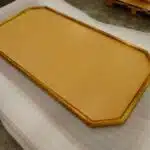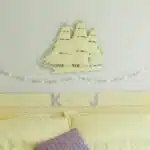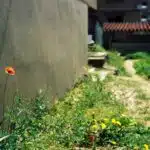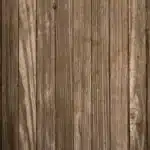Creating a large picture frame can be a daunting task, but it doesn’t have to be. With the right tools and materials, you can easily make your own custom DIY picture frame that is perfect for showcasing your favorite artwork or photos. Plus, by doing it yourself, you have the ability to save money and add a personalized touch to your home decor.
In this article, we will go through step-by-step instructions on how to create a large picture frame without breaking the bank. We will discuss the necessary materials needed, from wood to hardware, as well as some tips and tricks for making sure your frame looks professional and polished. Whether you’re an experienced DIY crafter or just starting out, this guide will provide all the information you need to make a beautiful and functional large picture frame that you can be proud of.
Measuring And Cutting Wood
Have you ever heard the phrase “measure twice, cut once”? It’s a classic woodworking adage that emphasizes the importance of measuring accuracy before making any cuts. This is especially true when it comes to creating a large picture frame, as even the slightest discrepancy in measurement can throw off the entire project. To ensure that your frame is perfectly square and symmetrical, take the time to carefully measure and mark your wood before making any cuts.
When it comes to cutting techniques, there are a few different options depending on your tools and skill level. For those with a circular saw or table saw, a straight cut is probably the easiest option. However, if you don’t have access to these tools or aren’t confident using them, a handsaw or jigsaw can also get the job done. Just be sure to use a guide (such as a straightedge) to keep your cuts straight and consistent.
No matter which cutting technique you choose, it’s important to take your time and work carefully. Rushing through cuts can lead to mistakes and uneven edges, which will only cause problems later on in the project. Remember: precision is key when it comes to creating a professional-looking picture frame!
Transitioning into the next section about choosing the right wood: Now that you’ve mastered measuring accuracy and cutting techniques, it’s time to move onto choosing the right type of wood for your frame.
Choosing The Right Wood
After measuring and cutting the wood, it’s time to choose the right wood for your DIY large picture frame. One important factor to consider is the wood grain, which refers to the patterns and texture of the wood fibers. Some popular options include oak, maple, cherry, and walnut. Each type of wood has its own unique grain pattern and color variation that can add character and style to your frame.
Another important consideration when choosing wood for your DIY project is sustainability. As more people become environmentally conscious, many are looking for ways to reduce their carbon footprint by using eco-friendly materials that are sourced responsibly. There are various sustainability options available such as reclaimed or salvaged wood. These types of woods have been repurposed from old buildings or other structures that would otherwise be discarded. Using these materials not only reduces waste but also gives a unique look to your picture frame.
Before moving on to sanding and preparing the wood, it’s important to take some time in selecting the right type of wood for your DIY large picture frame. Consider both the aesthetic appeal of the grain pattern as well as sustainable options such as reclaimed or salvaged woods. With these factors in mind, you’ll be able to create a beautiful frame that not only looks great but also helps reduce waste and promote environmental responsibility.
Sanding And Preparing The Wood
When making a DIY large picture frame, choosing the right wood is essential. To ensure the finished product looks its best, use a wood that is strong, durable and attractive. Before applying the final finish, the wood must be sanded until it is smooth and even. A handheld sander with varying degrees of sandpaper can be used for this. Once the wood is sanded, it should be wiped with a damp cloth to remove any sawdust. A finish can then be applied to protect the wood and give it a nice polished look. For a glossy finish, a polyurethane sealer should be used.
Choosing The Wood
As you embark on your DIY picture frame journey, selecting the right type of wood is crucial. You’ll want to choose a wood that not only complements the artwork but also fits your personal style. Consider the wood grain and color options when selecting your wood. The wood grain will determine how your frame looks when finished, while the color options available will determine how well it matches or complements your artwork.
When choosing the right type of wood for your DIY picture frame, it’s important to consider both hardwood and softwood options. Hardwoods such as oak, walnut, and maple are durable and have unique patterns in their grains that add character to any project. Softwoods like pine or cedar are easier to work with but may require more sanding to get a smooth finish. Don’t be afraid to mix different types of woods for a more eclectic look.
Before starting any sanding or preparing of the wood, make sure it is free from knots and other defects that may interfere with the finished product. Once you’ve selected your pieces of wood, you’ll want to use sandpaper (medium-grit) to remove any rough spots or imperfections in the surface. This will ensure a smooth finish when applying paint or stain later on in the process. With all these considerations in mind, let’s move on to creating our perfect DIY picture frame!
Sanding The Wood
Now that you’ve selected the right type of wood for your DIY picture frame, it’s time to start sanding and preparing the wood. Sanding is a critical step in the process as it helps remove any rough spots or imperfections on the surface of the wood. There are different types of sandpaper available in the market, and selecting one can be overwhelming. However, standard medium-grit sandpaper is perfect for this project.
To begin sanding, first, ensure that your wood is free from knots and other defects that may interfere with the finished product. Then, use medium-grit sandpaper to smooth out any rough spots on your wood’s surface. You can use different sanding techniques such as circular or back-and-forth strokes to achieve an even finish. It’s essential to be patient while sanding to avoid over-sanding.
After you have sanded all sides of your wood pieces thoroughly, wipe them down with a clean cloth to remove any dust particles created during sanding. You’re now ready to move onto the next step in creating your DIY picture frame!
Applying A Finish
Now that the wood has been sanded and prepared, it’s time to apply a finish. There are different types of finishes available in the market, such as paint, stain, or varnish. The type of finish you choose will depend on your personal preference and the look you want to achieve for your DIY picture frame.
Paint is a great option if you want to add color or create a specific design on your picture frame. Stain can enhance the natural beauty of the wood grain while still providing a protective layer. Varnish is a durable and long-lasting option that provides excellent protection against scratches and moisture.
When applying finishes evenly, it’s crucial to follow the manufacturer’s instructions carefully. Some finishes require multiple coats with drying time in between each coat. You can use a brush or cloth to apply the finish, depending on its consistency. Ensure that you cover all sides of your wood pieces thoroughly, including any corners or edges.
Remember that applying finishes can be messy, so make sure you work in a well-ventilated area and wear appropriate protective gear such as gloves and safety goggles. Take your time when applying finishes to achieve an even coat without drips or excess buildup. With these tips in mind, you’ll be able to create a beautiful finished product for your DIY picture frame.
Staining Or Painting The Wood
The next step in creating your own large picture frame is to stain or paint the wood. Wood staining techniques can help you achieve the perfect color for your frame, whether you prefer a natural wood grain or a more vibrant hue. Before you begin staining, it’s important to sand down the wood to remove any rough spots or imperfections. This will ensure that the stain adheres evenly and creates a smooth finish.
Choosing the right paint color is also crucial when it comes to making your own picture frame. You may want to consider the colors of the room where the frame will be displayed, as well as the colors of the artwork you plan to hang inside it. A neutral color like white or black can complement almost any decor style, while bolder colors like red or blue can add a pop of interest and personality.
Once you’ve decided on your preferred staining or painting method and color, it’s time to get started! Grab your brushes and supplies and let your creativity flow as you transform a simple piece of wood into a stunning picture frame. In the next section, we’ll discuss how to create the border for your frame using molding and other materials.
Creating The Frame’s Border
Accurately measuring the materials needed for the frame is essential for a successful project. A tape measure, straight edge, and a pencil are necessary tools for accurately marking and cutting the wood pieces. After measurements have been determined, the wood pieces can be cut using a saw, such as a miter saw or jigsaw. Sanding the cut wood pieces is recommended for a smooth finish on the frame’s border.
Measuring Materials
To create the perfect border for your DIY large picture frame, measuring materials is an essential first step. Measuring angles accurately is particularly important to ensure that the corners of your frame fit together seamlessly. The best way to do this is by using a reliable angle finder tool or a protractor.
When it comes to cutting techniques, precision is key. You’ll need to measure and mark your materials carefully before cutting them, using either a hand saw or a circular saw. Be sure to follow safety precautions and wear protective gear while cutting. Remember, it’s always better to cut slightly larger than needed and sand down the edges afterward than to end up with pieces that are too small.
Overall, taking the time to measure your materials accurately and use proper cutting techniques will pay off in the final product. A well-crafted border will make all the difference in showcasing your beautiful artwork or photograph. So take your time, be patient, and enjoy the process of creating something truly special!
Cutting Wood Pieces
Moving on to the next subtopic, cutting wood pieces is a crucial step in creating the frame’s border. Before starting, ensure that you have all the necessary woodworking tools, including a saw and sandpaper. Safety precautions must also be taken seriously, such as wearing protective gear like gloves and eye goggles. Always make sure you have a clear workspace before starting.
To begin cutting wood pieces, use a measuring tape to mark the length of the material accurately. It’s better to measure twice than cut once to avoid any errors. Next, use a hand saw or circular saw to cut along the marked line slowly and carefully. Remember always to cut slightly larger than needed; this way, you can sand down any excess wood later on.
Once you’ve finished cutting all your wood pieces, it’s time to sand them down. Sandpaper is used for smoothing rough edges and removing splinters from the material. Hold the sandpaper firmly and rub it over each piece of wood until they are smooth to touch. This step will help achieve seamless joints between corners when assembling your DIY large picture frame.
Attaching The Border To The Base
According to a recent study, around 70% of people prefer to frame their pictures on their own rather than buying pre-made ones. The satisfaction of creating something with your own hands and the ability to customize it according to your taste is why DIY projects are gaining popularity.
Now that you have created the border for your large picture frame, it’s time to move onto the next step. Alternative materials such as cardboard or foam board can be used instead of wood for the base. This makes it easier to handle and lighter in weight. It’s important to ensure that all the measurements are accurate before cutting out the base.
Decorative border designs can add a touch of personality and uniqueness to your DIY project. You can use stencils or freehand drawing techniques to create intricate patterns or shapes on the border. Another option is to use decorative tape or washi tape in different colors and designs. This is an inexpensive way of adding a pop of color and style to your frame.
With the border attached securely to the base, it’s time to move onto adding the backing and glass. This will protect your picture from dust and damage while also giving it a professional look. Stay tuned for our next section where we will guide you through this process step by step!
Adding The Backing And Glass
Now that the frame is assembled, it’s time to add the backing and glass. The backing serves as a support for the picture while also protecting it from dust and damage. There are various alternatives to choose from when it comes to backing, including foam board, hardboard, and plywood. Foam board is lightweight and easy to handle but may not be durable in the long run. Hardboard, on the other hand, is more durable but heavier and harder to cut.
When it comes to glass options, there are several choices available as well. Regular glass is the most common option but can be brittle and easily breakable. Acrylic or plexiglass is a more durable alternative that won’t shatter like regular glass. However, acrylic may scratch easily if not handled with care. Another option is UV-protected glass or acrylic that will protect your picture from harmful UV rays that can cause fading over time.
Choosing the right backing and glass for your DIY large picture frame depends on your personal preference and budget. Consider what type of picture you are framing and where it will be displayed before making your decision. Once you have chosen your materials, carefully measure and cut them to fit inside the frame. With the backing and glass securely in place, you are one step closer to completing your custom picture frame project! In the next section, we’ll discuss choosing hardware and hanging options so you can proudly display your creation on any wall in your home or office.
Choosing Hardware And Hanging Options
When making a large picture frame, it is important to consider the hardware selection, hanging options, and anchoring methods to ensure the frame is secure and properly hung. Wall anchors and hanging strips are viable options for lighter frames, while nails, screws, and hooks can also be used. Drilling and finding studs is a good way to ensure the frame is properly secured. Picture frame brackets, hangers, and picture rails can all be used to hang large frames. Additionally, the French cleat system and anchor bolts are both viable options for heavier frames.
Hardware Selection
Choosing the right hardware for your DIY picture frame is crucial to ensure it stays secure and in place for years to come. It can be overwhelming to navigate the vast selection of options available, but with a few tips for hardware installation, you can make an informed decision that works best for your specific project.
Firstly, consider the weight of your artwork and the type of wall it will be hung on. For heavier or larger frames, opt for D-ring hangers or wire hangers that can support its weight. If hanging on drywall, use anchors to provide extra stability. Secondly, think about the aesthetic you want to achieve. Choose hardware that complements the style of your frame and artwork. Finally, prioritize quality over cost as this will ensure durability and safety.
When installing hardware onto your DIY picture frame, it’s essential to take proper precautions to avoid any mishaps. Use a level tool to ensure accurate placement and measure twice before drilling any holes. Make sure all screws are tightly secured and check periodically after hanging to ensure everything remains level and stable.
By choosing the right hardware and following these tips for installation, you can confidently hang your DIY picture frame with ease and enjoy it as a beautiful addition to your home decor.
Hanging Options
When it comes to DIY picture frames, choosing the right hardware is crucial for both functionality and aesthetics. In addition to selecting the appropriate hanging hardware, you also need to consider the hanging options that best suit your project. One popular option is using hanging wire, which provides a flexible and adjustable way to hang your frame. Sawtooth hangers are another common choice, especially for smaller or lighter frames.
Hanging wire is an excellent option if you want flexibility in adjusting the height of your picture frame once it’s on the wall. To use this method, attach two D-rings or screw eyes to either side of the back of your frame, ensuring they are level with one another. Then, thread a length of picture-hanging wire through each ring and twist it securely around itself on either end. This will create a strong loop that you can hang over a nail or hook in the wall.
Sawtooth hangers offer a simple yet secure way to hang smaller or lighter picture frames. These hangers feature small teeth that grip onto screws or nails in your wall, holding your frame securely in place. To install sawtooth hangers onto your DIY picture frame, simply measure and mark where you want them to go on either side of the back of the frame. Use small screws or nails to attach them firmly to the wood before hanging up your finished project.
Wall Anchors
To ensure that your DIY picture frames are securely hung on the wall, choosing the right hardware is crucial. In addition to hanging wire and sawtooth hangers, another important option to consider is the use of wall anchors. Wall anchors are essential when hanging heavier frames or when attaching frames to drywall or plaster walls.
There are several types of wall anchors available in the market, including plastic anchors, toggle bolts, and molly bolts. Plastic anchors are a popular choice for lighter frames and come in various sizes to fit different screw diameters. Toggle bolts and molly bolts are sturdier options that can support heavier weights. Toggle bolts work by expanding behind the drywall while molly bolts create a strong grip by spreading out behind the wall surface.
When installing wall anchors, it’s important to follow proper techniques to ensure they provide optimal support for your frame. First, drill a pilot hole slightly smaller than the anchor size to prevent damage to the wall surface. Then, insert the anchor into the hole until it’s flush with the wall surface. Finally, attach your picture frame using appropriate screws or hooks that fit securely into the anchor.
Choosing appropriate hardware and hanging options can make all the difference in creating beautiful and functional DIY picture frames. By considering different anchor types and installation techniques, you can ensure that your frames remain secure and stable on your walls for years to come.
Installing The Hanging Hardware
When it comes to installing the hanging hardware for your large picture frame, there are a variety of options available. The type of hardware you choose will depend on the weight of your frame and the wall material you’ll be hanging it on. Some common types of hardware include sawtooth hangers, D-ring hangers, and wire.
Sawtooth hangers are a popular choice for lighter frames, typically up to 20 pounds in weight. They consist of small metal plates with jagged teeth that can easily be nailed or screwed into the back of your frame. D-ring hangers are another option for lightweight frames but offer a bit more stability than sawtooth hangers. They consist of two metal rings that you’ll attach to opposite sides of your frame using screws.
For heavier frames, wire is often the preferred hanging method. This involves attaching a sturdy wire to either side of your frame and then securing it to heavy-duty wall hooks or screws in the wall. Be sure to use wire that’s rated for the weight capacity of your frame and always hang it from two separate hooks or screws for added stability.
By selecting the appropriate hanging hardware and ensuring that it’s installed correctly, you can safely display your DIY large picture frame for years to come. Once your hardware is secure, you’ll be ready to move on to adding finishing touches like matting and glass protection.
Adding Finishing Touches
Choosing colors for your DIY large picture frame can be a fun and creative process. The color of the frame should complement the picture it holds, but also reflect your personal style. You may want to paint the frame a neutral color such as white or black to keep the focus on the picture, or choose a bold color to make a statement.
Decorating with frames is an excellent way to add personality and warmth to any space. A large picture frame can be used as a focal point in a room or as part of a gallery wall. Try mixing and matching different sizes and colors of frames for an eclectic look, or stick to one color and size for a more cohesive feel. Don’t be afraid to experiment with different arrangements until you find what works best for you.
Using a miter saw is an essential skill when making a DIY large picture frame. This tool helps you cut precise 45-degree angles in the wood, which are necessary for creating tight corners that hold together securely. With practice, using a miter saw will become second nature and allow you to create professional-looking frames every time. Remember to always wear protective gear such as safety glasses and gloves when operating power tools.
Using A Miter Saw
- When using a miter saw to make a large picture frame, it is important to pay attention to the angles of the corners for a precise cut.
- Accurately setting the angles with a miter saw allows for a seamless fit to join the corners of the frame.
- To ensure the angles are accurate, the miter saw must be adjusted according to the desired degree of the cut.
- To make sure the corners of the frame are cut to the same angle, it is important to use a protractor or other angle measuring tool for reference.
Cutting Corners
Getting a perfect cut with a miter saw can be challenging, especially when making large picture frames. However, there are some DIY shortcuts you can use to create quick frame alternatives without compromising on the quality of your cuts. One such shortcut is cutting corners.
To cut corners, you need to adjust the angle of your miter saw by a few degrees. This will ensure that the corners fit together perfectly when you join them to make your frame. Start by measuring the length and width of your picture and add an extra inch to each side for the frame’s border. Then, mark the corners where you want to make your cuts and adjust the angle of your miter saw accordingly. Remember to test your cuts on scrap wood before proceeding to cut your frame’s pieces.
Cutting corners is an efficient way of saving time and materials when making large picture frames using a miter saw. With this DIY shortcut, you can create quick frame alternatives without having to worry about uneven or poorly fitting corners. So, next time you need to make a picture frame, try cutting corners and see how much easier it makes your project!
Setting Angles
When using a miter saw, one of the most common mistakes people make is not setting the correct angles. This can lead to uneven cuts and poorly fitting corners, which can ruin your project. To avoid this problem, it’s crucial to understand how to set the angle on your miter saw correctly.
The best practice for setting angles on a miter saw is to use a protractor or angle finder tool. These tools will help you measure the exact angle you need for your cut and ensure that your cuts are accurate and precise. It’s also essential to double-check your measurements before making any cuts to avoid any costly mistakes.
Another helpful tip is to practice on scrap wood before starting your actual project. This will allow you to test your cuts and make any necessary adjustments before cutting into expensive materials. With these best practices in mind, you can confidently use a miter saw and create beautiful projects with perfectly angled cuts every time.
Using A Table Saw
Before diving into how to use a table saw for your DIY picture frame project, it’s essential to address some safety concerns. A table saw can be dangerous if not used correctly, and unfortunately, accidents happen more often than we’d like. However, following some basic safety guidelines can significantly reduce the risk of injury. Always wear eye protection and avoid loose clothing or jewelry that could get caught in the blade. Keep your hands away from the blade and use a push stick to move wood through the saw.
Once you’ve reviewed table saw safety, it’s time to choose the right blade for your project. The type of blade you need depends on what material you’re cutting. For instance, crosscut blades are best for cutting across the grain of wood while ripping blades excel at making long cuts with the grain. Additionally, there are general-purpose blades that work well on most materials. Choose a blade with a high tooth count for a smoother finish or fewer teeth for faster cuts.
Now that you know how to stay safe and select the right blade let’s look at some tips when using a table saw:
- Make sure your table saw is level and stable before using it.
- Use feather boards to keep wood straight and prevent it from wandering during cuts.
- Always use a miter gauge or fence when making angled cuts.
- Don’t force wood through the saw; let the blade do its job.
- Keep your hands behind the blade when pushing wood through.
Using a drill is an essential part of this DIY picture frame project because we need to create pilot holes before joining two pieces of wood together. Let’s explore how to use a drill in more detail.
Using A Drill
Drilling Techniques:
When it comes to making a large picture frame, using a drill is an essential tool. Drilling is the process of creating holes in wood or any other material with the help of a rotating tool. There are various drilling techniques that you can use depending on the type of hole and the depth required. The most common drilling technique is the twist drill, which has a pointed end and two spiral grooves that remove material as they cut.
Safety Precautions:
Drilling can be dangerous if not done properly. Before you begin, ensure that you have taken all necessary safety precautions to avoid accidents. Always wear protective gear such as goggles and earplugs to prevent debris from entering your eyes or ears. Additionally, make sure that you have a firm grip on the drill and maintain control throughout the drilling process.
Table:
| Drill Bit Size | Hole Size | Screw Size |
|---|---|---|
| 1/16″ | 3/32″ | #2-56 |
| 5/64″ | 7/64″ | #4-40 |
| 3/32″ | 1/8″ | #6-32 |
| 7/64″ | 9/64″ | #8-32 |
Using a nail gun can be very helpful in attaching pieces of wood together when making a large picture frame, but it requires some skill and precision. Before moving on to using a nail gun, ensure that you have mastered drilling techniques and have taken all necessary safety precautions to avoid accidents.
Using A Nail Gun
Did you know that using a nail gun can increase your productivity by up to 60% compared to traditional hammering? That’s right! According to research conducted by the Occupational Safety and Health Administration (OSHA), using a nail gun not only saves time but also reduces repetitive motion injuries.
Before using a nail gun, it is important to take appropriate safety precautions. Always wear protective gear such as safety goggles and earplugs to protect yourself from flying debris and loud noises. Additionally, ensure that the tool is properly maintained and free of defects before use. Familiarize yourself with the manufacturer’s instructions and follow them strictly.
There are two main types of nail guns: pneumatic and cordless. Pneumatic nail guns require an air compressor to operate, while cordless models use battery power. Each type has its own advantages and disadvantages. Pneumatic nail guns tend to be more powerful and have higher driving speeds, making them ideal for heavy-duty projects. Cordless models are more portable and do not require the use of an air compressor, making them ideal for outdoor projects or areas without access to electricity.
Troubleshooting Common Issues
Common mistakes can happen when making a DIY large picture frame. One of the most common issues is uneven corners. This happens when the cuts on the wood are not aligned properly or when there is not enough pressure applied during the assembly process. To solve this, make sure to measure and cut precisely, and apply equal pressure when assembling.
Another common mistake is using the wrong type of glue. Some glues are not strong enough for a large frame and can cause it to fall apart over time. To prevent this, use a strong adhesive like wood glue or epoxy that can withstand the weight of the frame. Additionally, make sure to let the glue dry completely before hanging your picture.
Problem-solving techniques can also be useful in fixing any issues that may arise during the process. For example, if you notice gaps between corners after assembly, try using wood filler to fill them in and sanding it down until it’s smooth. If you accidentally drill too deep for your screws, try filling the hole with toothpicks or wooden dowels before re-drilling at a shallower depth.
| Common Mistakes | Problem-Solving Techniques | Preventative Measures |
|---|---|---|
| Uneven corners | Measure and cut precisely; apply equal pressure during assembly | Use clamps to secure pieces while assembling |
| Wrong type of glue | Use strong adhesive like wood glue or epoxy; let dry completely before hanging picture | Research types of adhesives suitable for large frames |
| Gaps between corners | Use wood filler and sand down; ensure tight fit during assembly | Double check measurements and cuts before assembling |
Crafting a DIY large picture frame can be a fun project but avoiding common mistakes is crucial in ensuring its longevity. By utilizing preventative measures such as measuring precisely, using strong adhesive, and applying equal pressure during assembly, potential issues such as uneven corners can be avoided. However, if problems do arise, problem-solving techniques like filling gaps and re-drilling at shallower depths can help fix them. With these tips, you can create a beautiful and sturdy frame that will showcase your cherished memories for years to come.
Conclusion
Creating a DIY large picture frame can be a fun and rewarding experience for anyone who enjoys working with their hands. By following these simple steps, you can create a beautiful and unique frame that will showcase your favorite photos or artwork.
First, measure and cut the wood to the desired size. Choose a high-quality wood that is sturdy and durable, such as oak or maple. Sand and prepare the wood before staining or painting it to your preferred color. Then, create the frame’s border using a table saw, drill, and nail gun. If you encounter any common issues along the way, troubleshoot them with patience and attention to detail.
In conclusion, making a DIY large picture frame requires some basic woodworking skills but can be accomplished by anyone willing to put in the effort. With proper planning and execution, you can create an impressive piece of art that will last for years to come. So go ahead, grab your tools, and get started on your own custom picture frame today! Remember: Rome wasn’t built in a day – take your time with each step for the best results.
Image Credits





























